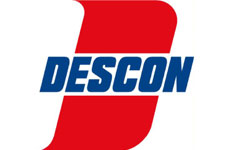You can learn more from our asked questions
Have a question related to ceramic tile? Maybe you’re not the first who doesn’t know the answer. Many issues are common to the industry in general, so you may want to check out the list below to see whether the answer to your question is there.
Ceramic tile are made from mixture of clays, sands and other natural substances. The body of the tile is then molded into shape and then fired at extremely high temperature in a kiln. The most common tile shapes are square and rectangular.
Natural Stone is stone that is quarried and removed from the ground. Due to the mineral composition, natural stone is highly durable and is very resistant to chemicals and abrasion. Unlike ceramic tiles, natural stone does however require regular sealing and maintenance to keep it from absorbing spills and stains in the home.
Tiles are both practical and popular. They are typically known for being hard wearing, long lasting and easy to maintain. Tiles can withstand wear and tear from the likes of muddy wellies and dirty paw prints to everyday spills and stains, and with a wide variety of designs shapes and finishes on the market today, there is a tile to suit everybody’s needs.
Multiply length & width of actual work size and divided by (10.76) will get you square meter. Ensure to buy 10% extra to cater cutting, and breaking etc.
The manufacturing process of the Vitrified tiles is far more superior to Ceramic tiles. The Vitrified tiles are also homogeneous and consistent in composition. Ceramic tiles have merely a decorative coat on the top and hence their composition is not consistent.
Currently we do not supply our tiles directly to consumers. You can find your local stockiest by entering your post code into the ‘Where can I buy? ‘Section of our website. All of our independent retailers have access to any of the products in our portfolio.
When a tile is “rectified” its edges are cut at the factory after it is baked. The natural, pressed and somewhat rounded edges of the tile are cut and machined to produce a fairly sharp, precise edge with a micro-bevel and a flat surface at the perimeter. This procedure is common for porcelain floor tile but is also sometimes performed on large format ceramic wall tiles. With this precision the tiles can be set with a 2 mm to 3 mm grout joint and due to the flatness at the edges the joints are less visible.
The finish on different semi-polished tiles can vary from a very slight polish on the high spots of a textured glaze to an almost fully polished surface that reveals some pits or dull areas. Often it is done to more authentically duplicate stone tile which have some natural fissures. It is also less slippery and less susceptible to visible scratches than fully polished tiles.
Unglazed porcelain tiles are highly polished and have rectified edges. They are usually through-body porcelain and suitable for commercial traffic. Some of them are treated with an impregnating sealer at the factory whereas others may have a label on the carton that states that a solvent-based impregnator needs to be applied during installation.
This is a Nano polished tile, usually rectified, that is produced by applying a thick glaze, machining it smooth and polishing it. Glazes are necessary for printing broad digital inkjet designs onto the tile. Unglazed porcelain, which can also be highly polished, is not suitable for most digital inkjet designs.
This term refers to the tile’s design that is printed onto the surface. “High Definition” is another industry marketing term to describe the process. Today, images that are created from photographs by a computer program are then applied to the tile by inkjets, much like modern office printers. With this technology the designs are more exciting and attractive than ever.
Yes, Master is producing all type of tile for every area like (bedroom, lobby, etc.)
For more information please visit our website www.mastertiles.com
Some manufacturers use the V scale for grading the shade or tone variations of a particular tile product from piece to piece. The tone variations are intentional and part of the design. Many porcelain floor tiles that emulate natural stone benefit from changes in tone from tile to tile and more closely resemble the real thing. Substantial variation (V4) can also be quite attractive for certain tile designs.
V1 = little or no shade variation
V2 = slight variation
V3 = moderate variation
V4 = substantial variation
Click here to check the Color Shade Variations
The porosity of a ceramic tile or a porcelain tile is the water absorption of the material. When choosing a tile, pay attention to the ratings that measure the percentage of water absorbed (porosity). The classifications for the porosity of tile are: impervious (least absorbent), vitreous, semi-vitreous and non-vitreous (most absorbent). Porous tile should not be used outdoors where cold weather produces freeze/thaw cycles.
The COF of ceramic tiles refers to the Coefficient of Friction, which rates the slip resistance of tiles. The American Society for Testing and Materials (ASTM) recognizes several standard methods for measuring coefficient of friction for wet or dry surfaces. Tile used on commercial and residential floors should provide a safe walking surface in both wet and dry conditions.
Some manufacturers use the V scale for grading the shade or tone variations of a particular tile product from piece to piece. The tone variations are intentional and part of the design. Many porcelain floor tiles that emulate natural stone benefit from changes in tone from tile to tile and more closely resemble the real thing. Substantial variation (V4) can also be quite attractive for certain tile designs.
V1 = little or no shade variation
V2 = slight variation
V3 = moderate variation
V4 = substantial variation
Click here to check the Color Shade Variations
PEI Rating is used throughout the tiling industry to measure the abrasion resistance of a tile.
PEI 0 – Very little abrasion resistance. Recommended only for use on residential walls.
PEI 1 – Little abrasion, recommended mainly for use on residential and commercial walls.
PEI 2 – Recommended mainly for use on walls and some residential rooms such as bathrooms.
PEI 3 – Can be used on low traffic areas such as residential bathroom, living room and hallway floors.
PEI 4 – To be used on walls and medium to higher traffic areas such as all residential areas and some commercial areas.
PEI 5 – Can be used on all residential areas and most Commercial high traffic areas. This is the most durable tile.
Yes, it is definitely possible to fit new tiles on top of an old tiled floor provided that none of the underneath tiles are loose or uneven. However it is not advisable as the cost would be high and you would be reducing the headroom (height between the floor and the ceiling). However if you still want to go ahead, then see that the existing surface provides a good grip. If the existing flooring is of glazed tiles then they have to be roughened to give a good grip for the new floor. There are some other factors also that you have to take into consideration before deciding to fit new tiles on an old tiled floor. The most important being the finished floor level. You need to allow for the thickness of the tiles that you are laying, plus approximately 6-12 mm for the cement slurry/adhesive, depending on the type of flooring to be laid. Once this thickness is added on top of your existing floor, will you still be able to open doors, etc.
We do not recommend because the floor tile is much heavier than a wall tile. It is less porous and absorbent. The chances to adhere to the vertical surface are lesser than in a wall tile. This will result in the floor tile being easily dislodged from the surface and also cracking. However it is an individual’s choice if he is still ready to take risks, he can use the floor tiles on the wall.
While a cheap un-branded tile could crack for almost no reason at all, quality branded tiles will definitely take their share of stress and strain. Cracking however, is usually a result of poor tile fixing which results in weak uneven surfaces, air pockets below tiles, improper bedding which are the chief causes of cracking. And this has nothing to do with tiles, but baton washing damages the garments fabric.
Generally, ceramic tiles do not need to be sealed. Unglazed tiles including porcelain and natural stone should always be sealed. Stone especially is naturally porous, so will absorb spills and stains easily. Due to its porosity, we would recommend that you seal your grout however this is not a necessity. If you are in doubt as to whether your tiles or grout have been sealed, test the tile with a small amount of water. If the surface darkens, this may mean that it is absorbing the water which means it needs to baled.
To take full advantage of the technical characteristics, it is vital to carefully plan out and install ceramic and porcelain products. For this reason, our recommendations for ceramic installation include the following points:
1-Check the caliber, tone and quality of the product before installation.
2-Choose appropriate installation tools (notched trowel, rubber hammer, suction grip and rubber trowel for grouting).
3-Ensure that the surface on which the material is to be laid is level, clean and insulated from moisture.
4-Pay special attention to the type of adhesive to be used (consult the adhesive supplier), since each type of tile requires the appropriate adhesive.
5-Your installation professional should choose the appropriate size joint between pieces in order to guarantee the correct absorption of structural movements, and in consideration of dimensional tolerances of the product.
6-Clean off excess grout from the surface of the tiles while it is still fresh, using a sponge and clean water; never use hard materials that could scratch the tiles, such as metal spatulas or abrasive scourers. Always follow the recommendations given by the adhesive manufacturer.
7-Once the tiles are laid, avoid working in the tiled zone (plastering, painting, placing scaffolds/ladders, projecting metallic fragments from disc grinders, moving tools, dragging heavy objects, moving debris from abrasive building materials, etc. If this cannot be avoided, always protect the tiles and joints to prevent cleaning problems or deterioration.
You can also visit our Tile Laying Instructions page for better understanding.
Providing that they have been applied and sealed properly, tiles generally need little maintenance. Warm water with a non-abrasive detergent should be sufficient for the cleaning of your tiles. For this, we recommend that you use Fila Cleaner.
Natural stone or porcelain which requires sealing should be maintained according to the sealer instructions.
Grout maintenance is important. Dirty grout may require use of an intensive acidic cleaner designed to remove deep dirt and restore grout color. After cleaning the floor must be cleaned with clear water and allowed to dry. After cleaning grout must be resealed for proper protection.
Still have you any problem for solutions?
Head office address:
Call for help:
+92-55-4290378-83





